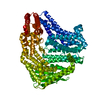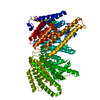+Search query
-Structure paper
| Title | Scalable protein design using optimization in a relaxed sequence space. |
|---|---|
| Journal, issue, pages | Science, Vol. 386, Issue 6720, Page 439-445, Year 2024 |
| Publish date | Oct 25, 2024 |
 Authors Authors | Christopher Frank / Ali Khoshouei / Lara Fuβ / Dominik Schiwietz / Dominik Putz / Lara Weber / Zhixuan Zhao / Motoyuki Hattori / Shihao Feng / Yosta de Stigter / Sergey Ovchinnikov / Hendrik Dietz /    |
| PubMed Abstract | Machine learning (ML)-based design approaches have advanced the field of de novo protein design, with diffusion-based generative methods increasingly dominating protein design pipelines. Here, we ...Machine learning (ML)-based design approaches have advanced the field of de novo protein design, with diffusion-based generative methods increasingly dominating protein design pipelines. Here, we report a "hallucination"-based protein design approach that functions in relaxed sequence space, enabling the efficient design of high-quality protein backbones over multiple scales and with broad scope of application without the need for any form of retraining. We experimentally produced and characterized more than 100 proteins. Three high-resolution crystal structures and two cryo-electron microscopy density maps of designed single-chain proteins comprising up to 1000 amino acids validate the accuracy of the method. Our pipeline can also be used to design synthetic protein-protein interactions, as validated experimentally by a set of protein heterodimers. Relaxed sequence optimization offers attractive performance with respect to designability, scope of applicability for different design problems, and scalability across protein sizes. |
 External links External links |  Science / Science /  PubMed:39446959 / PubMed:39446959 /  PubMed Central PubMed Central |
| Methods | EM (single particle) / X-ray diffraction |
| Resolution | 2.1 - 3.36 Å |
| Structure data | EMDB-50040, PDB-9exk: EMDB-50113, PDB-9f0l:  PDB-8s89:  PDB-8yl4:  PDB-8yl8:  PDB-9exz: |
| Chemicals | 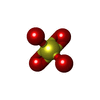 ChemComp-SO4: 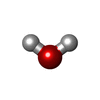 ChemComp-HOH: 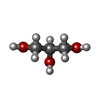 ChemComp-GOL: |
| Source |
|
 Keywords Keywords | DE NOVO PROTEIN / P400 / De novo protein design / De novo designed protein K12 / P600 |
 Movie
Movie Controller
Controller Structure viewers
Structure viewers About Yorodumi Papers
About Yorodumi Papers




